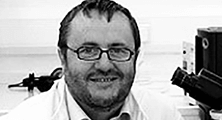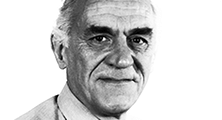
The UCL Institute of Ophthalmology (London, UK) was founded in 1948. Seventy years later, the institute continues to be a world-leader in ophthalmic research in collaboration with Moorfields Eye Hospital. How better to mark the occasion than holding a 70th anniversary symposium to celebrate the past, present and future research from the institute? On June 28, 2018, approximately 250 expert academics, researchers, clinicians, students and trainees were in attendance to revel in the institute’s history and future. Here, some of the speakers present their key ‘take home’ messages from their talks on the day.
John Marshall, Frost Professor of Ophthalmology, UCL Institute of Ophthalmology: “My lecture, ‘Echoes of Egos’, was an attempt to encapsulate 70 years of the institute in 15 minutes. Although the task was impossible, I wanted to demonstrate that right from its inception the institute was a major source of influence and innovation in eye science and surgery, with implications for millions worldwide. The earliest heads of departments all became major international figures who made fundamental discoveries in physiology and vision. Work at the institute also led to a revolution in cataract surgery and the creation of corneal refractive surgery. The institute has always remained at the forefront of ophthalmology, and is now a world leader in understanding genetic eye disease, gene therapy and the possibility of stem cell therapy for age-related diseases. It is not surprising that it is the number one institution for research on the eye.”
Matteo Carandini, Professor of Visual Neuroscience, UCL Institute of Ophthalmology: “We can use two-photon imaging to record the activity of more than 10,000 neurons in the visual cortex of mice during behavior. This has led us to the unexpected discovery that the visual cortex carries navigational signals. We can also record the activity of retinal neurons in awake mice, by imaging their axon terminals in a region called the superior colliculus. Using this technique, we have obtained preliminary data suggesting that retinal activity can be modulated by behavior.”

Pete Coffey, Professor of Visual Psychophysics, UCL Institute of Ophthalmology: Coffey gave a talk on the clinical pathway used by the London Project to Cure Blindness for the treatment of AMD. He also presented the first two cases in which patients received a stem cell-derived therapy, and discussed the clinical outcomes of the patients two years following transplantation.

Sobha Sivaprasad, Professor and Consultant Ophthalmologist, Moorfields: “The diabetic epidemic, new imaging modalities and clinical trials on preventive options have made it necessary to re-define the classification of diabetic retinopathy. New classifications should aim to include non-clinically visible lesions. Metabolic imaging may in fact explain the missing link between hyperglycemia and neurovascular retinal complications in diabetes.”

Astrid Limb, Professor of Retinal Biology and Therapeutics, UCL Institute of Ophthalmology: “Müller glial cells regenerate the zebrafish retina after injury. Although humans harbor these cells, there is no evidence that they can regenerate the retina. As these cells can be cultured indefinitely (from cadaveric human retina and from retinal organoids formed by human embryonic stem cells) they can be used as a source of neuroprotective factors to partially restore visual function in animal models of glaucoma and retinitis pigmentosa (RP).Based on these findings, we are currently in the process of developing a cell therapy to treat late stages of glaucoma.”

Chris Dainty, Professorial Research Associate, UCL Institute of Ophthalmology: “Imaging has evolved over the last 70 years from being purely a service function to a research-driven activity. Two highlights of my presentation were paintings by Terry Tarrant, and the development of fundus autofluorescence by Alan Bird and Fred Fitzke. Our research goal now is to visualize the structure and function of every single cell in the living human retina.”

Anthony Vugler, Lecturer in Retinal Neurobiology, UCL Institute of Ophthalmology:
Research from Vugler’s laboratory has shown that:
Human retinal progenitor cells show promise in slowing photoreceptor loss in a rodent model of RP.
In mice, outer retinal degeneration is accompanied by an increased potency of melanopsin signaling, most likely due to an increased availability of chromophore from the RPE – a phenomenom that might account for the development of photophobia in RP patients.

James Bainbridge, Consultant Retinal Surgeon, Moorfields: “In my presentation, I overviewed the first gene therapy for eye disease – Luxturna – that has been approved for use in the US, and discussed how it is being considered for use in the UK.”

Alan Bird, Emeritus Professor and Consultant, UCL Institute of Ophthalmology: “In the early days of the clinical department there was a major contribution to public health with involvement in research into trachoma and onchocerciasis (river blindness), which at the time were classified amongst the four most important blinding diseases worldwide. Work on onchocerciasis showed for the first time that optic nerve disease was a common cause of blindness, that consequent blindness was as severe in the rain forest as in the Savanna areas, and that the recommended treatment – diethylcarbamazine (DEC) – actually caused blindness. Changing treatment to invermectin has resulted in elimination of blindness due to onchocerciasis.”

